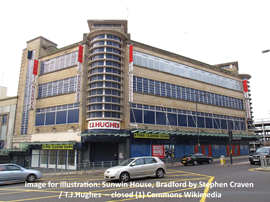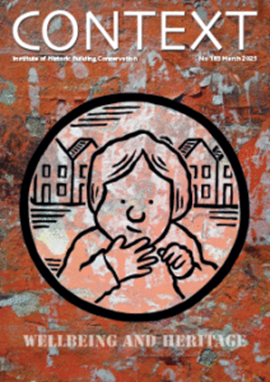ASCHB Transactions Volume 45 2024
It is a pleasure to welcome the latest set of ASCHB Transactions (Volume 45, 2024), which has arrived a little later in the year than has been customary. As I have written on numerous occasions, the content of the Transactions is always of great interest, with much for heritage management professionals to draw on. It makes for a very persuasive reason for joining the association.
There are six papers, each of which deals with a particular aspect of heritage management in the UK. Perhaps the one with the greatest general application is that by Steve Emery, formerly the national fire officer for English Heritage and Historic England, and subsequently fire officer for Oxford University, before becoming an independent fire advisor with Heritage Fire Consultancy. In ‘Causes and Effects of Roof Space Fires’ Emery gives a thorough explanation of the various weaknesses and fire solutions to reduce the probability of fires starting and spreading from elsewhere in the building.
Once a fire makes itself visible through the roof of a building, the probability of successful extinguishment becomes very low. The main danger is the collapse of burning roof timbers through ceilings or vaulting below (adding to the weight of combustibles on the upper floor). He gives some excellent, well-illustrated examples, including historic town centres where fire has spread from one building to another, usually through the roof spaces. He references the Eastgate Arch fire, Totnes; the Bridge Street fire, Chester; and the Royal Clarence Hotel, Exeter, as illuminating examples of the issues involved.
On the subject of skills, there is a helpful summary by Matthew Slocombe of the SPAB’s Old House project in Kent, highlighting the opportunities for training research, volunteer participation and commuting engagement in the gradual repair (for sale) of a Grade II*-listed building at risk. The approach is a somewhat different model to that of a conventional building preservation trust. The SPAB expects to complete the project by the end of 2024.
Also of interest is a paper by Lee Prosser and Liam Podbury regarding the discovery of an almost pristine domestic wall painting at Old Hatfield, Hertfordshire, and the challenges in planning and conservation. This particularly helpful analysis provides lessons for other cases where protecting such discoveries is becoming increasingly problematic in properties already subdivided and converted to residential use. The paper traces the discovery of the painting. It examines the process by which decisive action by the local conservation officer and cooperation with the developer was underpinned by an astute understanding of historic fabric, ensuring that this highly significant discovery was not destroyed. This paper is well worth seeking out.
Papers about under-regarded buildings are always of interest for what they show about careful methodical evaluation and repair. No 31a Grove End Road, St John’s Wood, London, is a small but remarkable building hidden away behind early-19th-century villas. It was designed by a leading Edwardian architect Thomas Tait for a leading sculptor Sir William Reid Dick as a studio. It was later remodelled as a home but has now adapted once again, turning the main space back into a studio for its new artist owner.
Reid Dick greatly benefited from the unprecedented demand for memorial sculpture in the aftermath of the first world war; among other works he produced the huge lion surmounting the Menin Gate, Ypres. The conservation work has included the removal of certain later features which were not themselves of significance (this sometimes-contentious aspect may be particularly of interest to heritage practitioners). The recent work has added a layer of new interest to a building that has architectural, historical and associative value, fully justifying its status is a listed building.
In a long and eclectically illustrated paper, Robyn Pender (see page 21 of this issue of Context) examines how energy availability has impacted buildings and what it tells us about the causes of the climate emergency and its solutions.
Although this current column has tended to concentrate on craft skills rather than professional development, a paper by Roger France is interesting for the historical perspective it gives on the early post-war courses in architectural conservation. Two of them failed to become established, while others were more successful, including those at York and Edinburgh. France describes the role of a number of important figures involved between 1946 and 1996.
This article originally appeared in the Institute of Historic Building Conservation’s (IHBC’s) Context 181, published in December 2024. It was written by Bob Kindred MBE.
--Institute of Historic Building Conservation
Related articles on Designing Buildings Conservation.
IHBC NewsBlog
Old Sarum fire in listed (& disputed) WW1 Hangar - Wiltshire Council has sought legal advice after fire engulfed a listed First World War hangar that was embroiled in a lengthy planning dispute.
UK Antarctic Heritage Trust launches ‘Virtual Visit’ website area
The Trust calls on people to 'Immerse yourself in our heritage – Making Antarctica Accessible'
Southend Council pledge to force Kursaal owners to maintain building
The Council has pledged to use ‘every tool in the toolbox’ if urgent repairs are not carried out.
HE’s Research Magazine publishes a major study of the heritage of England’s suburbs
The article traces the long evolution of an internal programme to research 200 years of suburban growth
IHBC Context 183 Wellbeing and Heritage published
The issue explores issues at the intersection of heritage and wellbeing.
SAVE celebrates 50 years of campaigning 1975-2025
SAVE Britain’s Heritage has announced events across the country to celebrate bringing new life to remarkable buildings.
IHBC Annual School 2025 - Shrewsbury 12-14 June
Themed Heritage in Context – Value: Plan: Change, join in-person or online.
200th Anniversary Celebration of the Modern Railway Planned
The Stockton & Darlington Railway opened on September 27, 1825.
Competence Framework Launched for Sustainability in the Built Environment
The Construction Industry Council (CIC) and the Edge have jointly published the framework.
Historic England Launches Wellbeing Strategy for Heritage
Whether through visiting, volunteering, learning or creative practice, engaging with heritage can strengthen confidence, resilience, hope and social connections.















